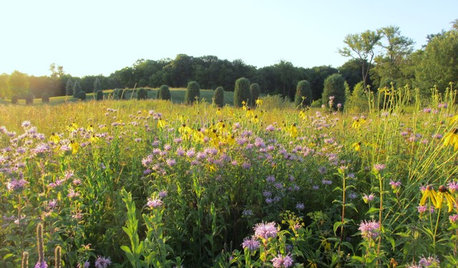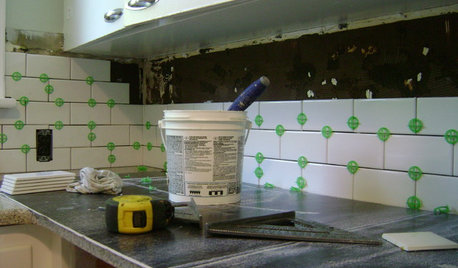About no till
Kimmsr
11 years ago
Related Stories

GARDENING GUIDESNew Ways to Think About All That Mulch in the Garden
Before you go making a mountain out of a mulch hill, learn the facts about what your plants and soil really want
Full Story
FUN HOUZZGuessing Game: What Might Our Living Rooms Say About Us?
Take a shot on your own or go straight to just-for-fun speculations about whose homes these could be
Full Story
KITCHEN DESIGNHouzz Call: Tell Us About Your First Kitchen
Great or godforsaken? Ragtag or refined? We want to hear about your younger self’s cooking space
Full Story
LIGHTINGWhat to Know About Switching to LED Lightbulbs
If you’ve been thinking about changing over to LEDs but aren't sure how to do it and which to buy, this story is for you
Full Story
LIFEHouzz Call: What Has Mom Taught You About Making a Home?
Whether your mother taught you to cook and clean or how to order takeout and let messes be, we'd like to hear about it
Full Story
GARDENING GUIDESWhat Prairies Teach Us About Garden Design
Wild spaces offer lessons for home gardeners about plants, pollinators and the passage of time
Full Story
FURNITUREHow to Buy a Quality Sofa That Will Last
Learn about foam versus feathers, seat depth, springs, fabric and more for a couch that will work for years to come
Full Story
KITCHEN DESIGNStay Cool About Picking the Right Refrigerator
If all the options for refrigeration leave you hot under the collar, this guide to choosing a fridge and freezer will help you chill out
Full Story
HEALTHY HOMEWhat You Need to Know About Dust and How to Fight It
Breathe easier with these 10 tips for busting mites, dander and other microscopic undesirables
Full Story
MOST POPULAR19 Kitchen Projects Every Homeowner Should Know About
Could your kitchen use a new sink, a backsplash, updated hardware, better organization, a good cleaning? Here's how to get started
Full Story



TheMasterGardener1
KimmsrOriginal Author
Related Discussions
no-till for roses as drought approaches?
Q
Problems with not tilling in compost?
Q
More Valentine Decor
Q
I forgot about my seed, now what?
Q
TheMasterGardener1
pnbrown
TheMasterGardener1
pnbrown
wayne_5 zone 6a Central Indiana
eric_wa
RpR_
TheMasterGardener1
rdak
KimmsrOriginal Author
pnbrown
wayne_5 zone 6a Central Indiana
Lloyd
maplerbirch
wayne_5 zone 6a Central Indiana
david52 Zone 6
wayne_5 zone 6a Central Indiana
TheMasterGardener1
KimmsrOriginal Author
pnbrown
KimmsrOriginal Author
TheMasterGardener1
pnbrown
TheMasterGardener1
nc_crn
KimmsrOriginal Author
pnbrown
nc_crn
wayne_5 zone 6a Central Indiana
pnbrown
curt_grow
RpR_
pnbrown
curt_grow
RpR_
maplerbirch
pnbrown
nc_crn
pnbrown
nc_crn
nc_crn
RpR_
GreeneGarden
pnbrown
GreeneGarden
jolj
TheMasterGardener1
david52 Zone 6